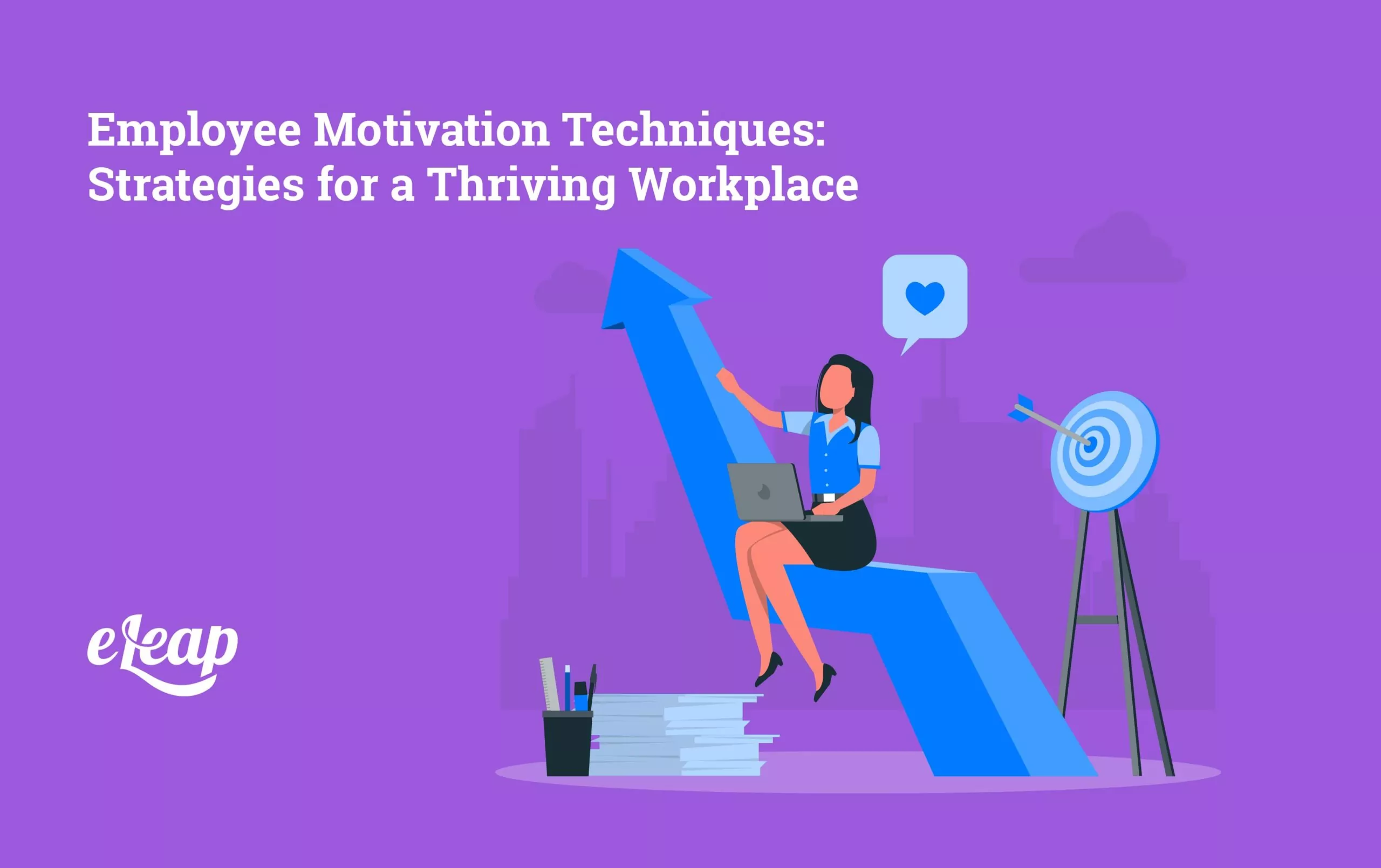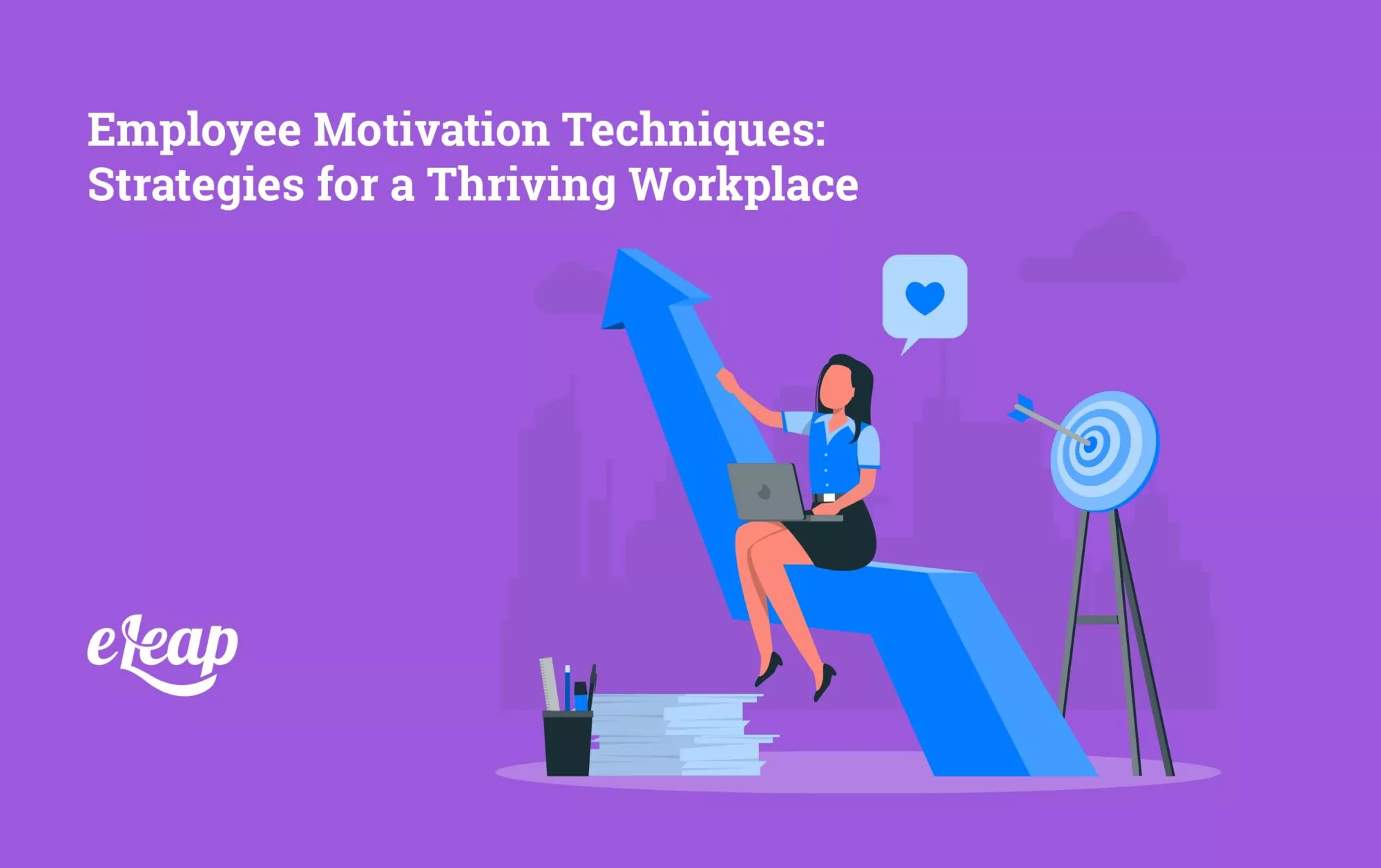Employee Motivation Techniques: Strategies for a Thriving Workplace

In any business, employee motivation techniques is crucial to maintaining high productivity, fostering a positive work environment, and ultimately driving the company toward success. Motivated employees are more engaged, productive, and likely to stay with an organization long-term. For business professionals, understanding and implementing effective employee motivation techniques is essential. This article will explore various strategies to help create a motivated and thriving workforce. Explore how eLeaP®’s Performance Management Platform can simplify evaluations, boost productivity, and drive measurable results.
What is Employee Motivation Techniques?
Before discussing the various employee motivation techniques, defining employee motivation techniques and why it plays such a critical role in the workplace is essential. Employee motivation refers to the enthusiasm, commitment, and energy an employee brings to their work. A motivated employee is someone who not only completes tasks but is engaged and willing to go above and beyond to achieve organizational goals.
Motivation is often divided into two categories: intrinsic and extrinsic. Intrinsic motivation comes from within, driven by personal satisfaction or enjoyment from the work. Extrinsic motivation, on the other hand, is influenced by external rewards such as bonuses, promotions, or public recognition. Both types are essential, but the key is understanding what motivates each employee, as different factors drive people.
Understanding the psychology of employee motivation techniques is essential for business professionals. Motivated employees tend to be more engaged, contribute higher-quality work, and are less likely to leave the company. Moreover, studies have shown that companies with highly motivated employees experience increased profitability, improved customer satisfaction, and a healthier organizational culture.
Effective Employee Motivation Techniques
Recognition and Reward Systems
One of the most effective techniques for motivating employees is through recognition and reward systems. Recognizing and rewarding employees for their hard work, achievements, and contributions to the company boosts their morale and fosters a culture of appreciation. Recognition can be public or private, depending on the employee’s preferences.
Public recognition, such as an employee of the month program, can inspire pride and accomplishment. On the other hand, private recognition may be more meaningful to employees who prefer a more personal acknowledgment. Rewards, such as bonuses, paid time off, or tangible gifts, also serve as an effective way to motivate employees.
While monetary rewards are often effective, it’s important to remember that they should not be the sole form of motivation. Studies have shown that employees value recognition and appreciation just as much as if not more than, financial incentives. This process makes it essential for business leaders to incorporate intrinsic and extrinsic recognition forms in their motivation strategies.
For example, eLeaP offers various reward systems through its platform that allow managers to acknowledge and reward employee achievements seamlessly. This stage can include both peer-to-peer recognition and manager-initiated rewards.
Career Development and Growth Opportunities

Career development is a significant motivator for employees, particularly those with long-term career vision. Employees want to know that they have room to grow within an organization, and providing them with opportunities for career advancement can significantly boost their motivation. This process can include offering professional development opportunities such as training, certifications, and access to learning resources.
Additionally, mentorship programs can be an excellent way to motivate employees by helping them develop their skills and advance in their careers. When employees feel that their employer is invested in their growth, they are more likely to feel motivated to put in the effort necessary to excel in their roles.
Providing opportunities for internal promotions is another way to encourage motivation. When employees know they can advance within the company, they are likelier to stay engaged and work hard toward their goals. According to a Gallup survey, employees who feel they have the opportunity to grow and advance are 2.5 times more likely to be engaged in their work.
Employee Autonomy and Empowerment
Another powerful motivation technique is to empower employees by giving them greater autonomy. When employees can make decisions and control their work, they feel more invested in the outcomes. Autonomy allows employees to take ownership of their tasks, often leading to increased creativity, innovation, and productivity.
Research has shown that empowered employees are likelier to be engaged and committed to their work. They are also less likely to experience burnout, as they have more control over their work-life balance and job responsibilities. Employers can foster a sense of ownership and motivation by encouraging employees to take on greater responsibility and trust them to make decisions.
For example, companies like eLeaP offer solutions that allow managers to delegate tasks effectively. These solutions give employees the autonomy to take charge of their responsibilities while supporting them with the necessary tools for success.
Creating a Positive and Supportive Work Environment
A positive and supportive work environment plays a crucial role in motivating employees. When employees feel safe, valued, and supported in their workplace, they are likelier to remain engaged and committed. Creating such an environment involves fostering open communication, promoting inclusivity, and providing employees with the resources and support they need to succeed.
Offering flexible work arrangements, such as remote work options or flexible hours, can help employees feel supported and maintain a healthy work-life balance. When employees feel their needs are respected and accommodated, they are more likely to feel motivated to contribute to the company’s success.
Promoting employee well-being through wellness programs, mental health support, and other resources can also improve motivation. Employees who feel supported personally and professionally are likelier to be engaged and perform at their best.
Aligning Motivation with Company Goals
Establishing a Shared Vision
Aligning employee motivation techniques with company goals is another key strategy for success. Employees are more motivated when they feel their work directly contributes to the organization’s success. Business leaders must communicate the company’s mission and vision clearly and frequently, ensuring employees understand how their contributions fit into the bigger picture.
A shared vision creates a sense of purpose and is a powerful motivator. When employees see how their efforts drive the organization’s success, they are likelier to stay engaged and committed to their work.
Transparent Communication
Effective communication is essential for keeping employees motivated and engaged. Business leaders should foster an environment of transparency, where employees are kept informed about company goals, challenges, and successes. Open lines of communication allow employees to feel more connected to the organization and more motivated to contribute to its success.
Encouraging employee feedback is another essential aspect of transparent communication. When employees can provide input on decisions and offer suggestions, they feel valued and heard, boosting their motivation.
Leadership and Employee Motivation Techniques
Leadership Styles That Inspire
The role of leadership in motivating employees cannot be overstated. Leadership styles significantly influence the level of motivation in the workplace. Transformational leadership, which focuses on inspiring and empowering employees to achieve their full potential, is highly effective in fostering motivation.
Leaders who inspire and motivate their employees through clear vision, encouragement, and support are likelier to cultivate a motivated workforce. On the other hand, transactional leadership, which focuses more on rewards and punishments, may be less effective in long-term motivation.
Leaders should build trust, foster positive relationships with their teams, and create a culture of collaboration and support. By doing so, they can inspire employees to go above and beyond in their roles.
Leading by Example
A crucial aspect of leadership is leading by example. Employees are more likely to be motivated when they see their leaders working hard, staying positive, and embodying the values and behaviors that the company encourages. Leaders who demonstrate commitment, accountability, and resilience inspire their teams to adopt similar attitudes and behaviors.
Leadership by example also fosters a sense of respect and admiration among employees. When employees feel that their leaders are genuinely invested in their success, they are more likely to be motivated to contribute to the organization’s goals.
Measuring and Evaluating Motivation Success
Key Performance Indicators (KPIs) for Motivation
Tracking the success of employee motivation techniques is essential for continuous improvement. Key performance indicators (KPIs) such as employee engagement scores, turnover rates, and productivity levels can provide valuable insights into the effectiveness of motivation strategies.
Regular employee surveys and feedback forms are an excellent way to gauge employee satisfaction and identify areas for improvement. By monitoring these KPIs, businesses can refine their motivation strategies to ensure they are meeting the needs of their workforce.
Continuous Improvement in Motivation Techniques
Employee motivation techniques is not a one-time effort but an ongoing process. Motivation strategies must adapt as company goals evolve and employee needs change. Business leaders should regularly evaluate the success of their motivation techniques and be willing to adjust them based on feedback and performance data.
Overcoming Challenges in Employee Motivation Techniques
Addressing Demotivation
There will always be challenges keeping employees motivated. Demotivation can occur for various reasons, including poor management, lack of recognition, or limited growth opportunities. Business leaders need to identify the signs of demotivation early and take action to address the underlying issues.
Effective communication, support, and engagement programs can help resolve these challenges and reinvigorate a demotivated workforce.
Motivating Remote Teams
Motivating remote teams presents unique challenges, but with the right strategies, it is entirely possible. Virtual recognition programs, remote team-building activities, and regular check-ins can help remote employees feel connected and motivated.
Conclusion
Employee motivation is key to maintaining a thriving workplace. Businesses can foster a motivated and engaged workforce by employing effective motivation techniques, aligning employee goals with company objectives, and creating a positive work environment. As organizations evolve, it’s essential to assess and refine motivation strategies to ensure ongoing success continually. By focusing on employee well-being, career development, recognition, and effective leadership, companies can unlock the full potential of their teams, leading to sustained success and growth.
By incorporating these techniques and tools, such as those offered by eLeaP, businesses can continue to create motivating environments that empower their employees to perform at their best.